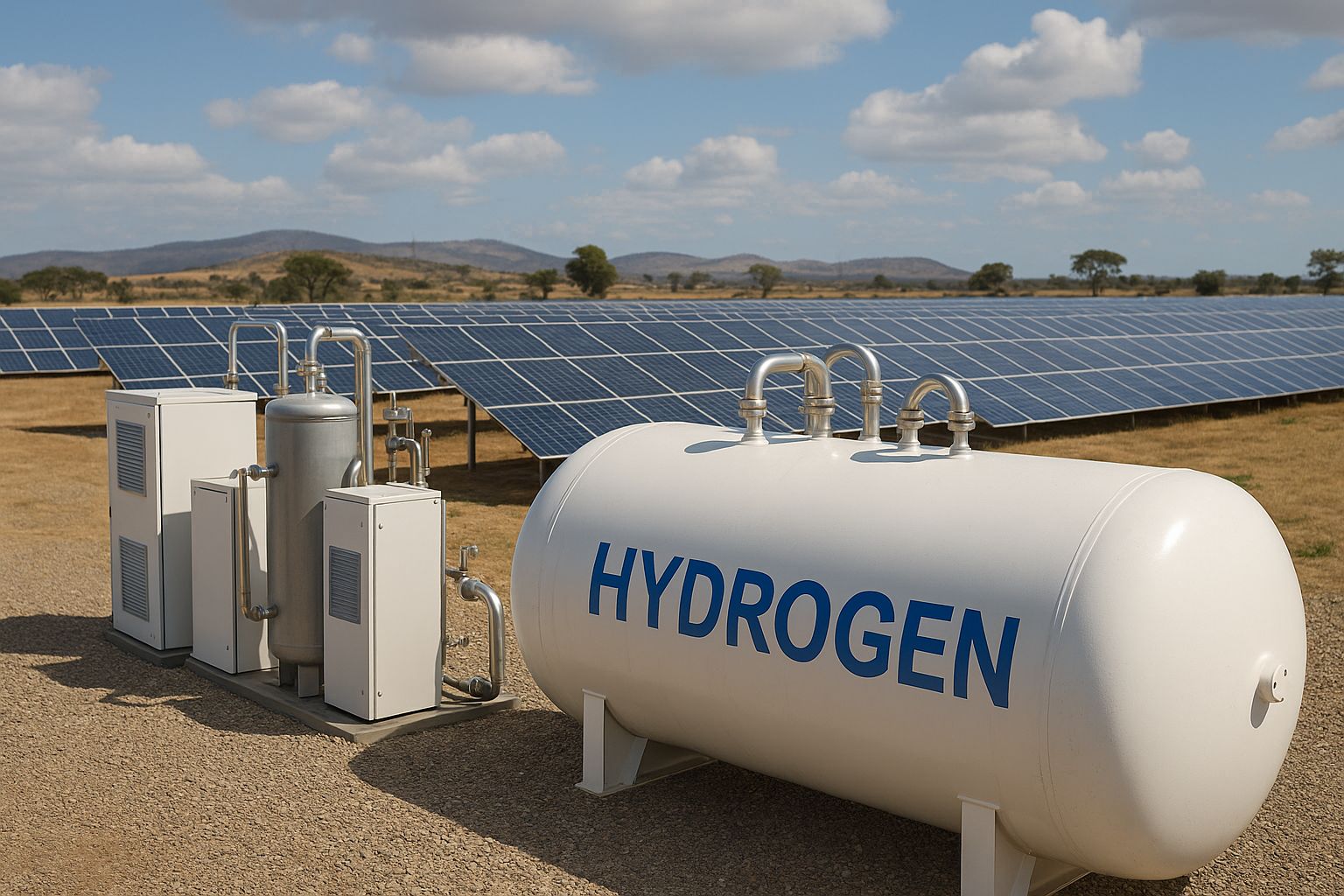Innovative financing and policy reforms key to green hydrogen growth in Africa
The report stresses that mitigating project risks will be critical to unlocking the region’s hydrogen potential. Banks and investors prioritize projects that demonstrate technical reliability, long-term offtake agreements, and stable cash flows. In the context of SSA, where electrolyzer track records are limited and political volatility is a concern, risk-mitigation tools such as credit guarantees, political risk insurance, and multilateral financing support are indispensable.

Sub-Saharan Africa (SSA) is racing to position itself as a global hub for green hydrogen, but significant financing and policy gaps could stall its progress. In a new study, Potential Financing Mechanisms for Green Hydrogen Development in Sub-Saharan Africa, published in Hydrogen (2025), researchers provide an in-depth examination of how innovative financing, structured partnerships, and robust policy frameworks can unlock the region’s vast hydrogen potential.
The research, supported by the H2Atlas-Africa initiative, offers a detailed roadmap for governments, investors, and stakeholders to move beyond planning toward bankable, scalable projects.
Assessing Readiness and Challenges in Green Hydrogen Deployment
The study highlights that while hydrogen technologies, from electrolysis to storage and transport, are widely established in high-income countries, SSA nations remain in the early stages of planning and pilot projects. Most countries in the region lack significant electrolyzer deployment, local manufacturing capacity, and the skilled workforce required to manage and scale hydrogen infrastructure.
A critical challenge is the technical complexity of electrolysis and the global shortage of electrolyzer manufacturers. These factors raise costs, increase project risk, and deter private financing. Moreover, existing grid infrastructures across SSA are often ill-equipped to handle the high-capacity connections required for large-scale hydrogen projects, creating one of the most significant barriers to deployment.
Political instability and regulatory uncertainty compound these risks. The study’s risk matrix identifies grid connectivity, hydrogen transport logistics, and political stability as the highest-priority risks for developers and investors. In particular, transporting hydrogen safely and efficiently through pipelines and trucking remains a logistical and safety challenge in regions with limited industrial infrastructure and fragmented regulatory oversight.
According to the report, the region’s vast renewable energy resources, particularly solar and wind, give SSA a natural advantage in producing cost-competitive green hydrogen. The challenge, according to the authors, is creating an environment that attracts and secures long-term investment while building institutional and technical capacity.
Financing models and market-making strategies
The study focuses on the development of financing models that can mobilize capital while de-risking early-stage projects. The authors recommend six key levers to catalyze investment and accelerate deployment.
First, green public procurement (GPP) can create predictable demand signals that drive down costs and attract private sector participation. By embedding hydrogen targets in public contracts, governments can support early adoption while transitioning toward more comprehensive sustainable public procurement frameworks.
Second, a combination of green loans, grants, tax credits, and carbon finance is essential to support both small-scale demonstration projects and large-scale commercial facilities. Blended finance, the authors argue, is particularly critical in contexts where local capital markets are underdeveloped and investor confidence is low.
Third, power purchase agreements (PPAs) and public-private partnerships (PPPs) provide reliable offtake arrangements that improve the bankability of hydrogen projects. The establishment of market-facilitating organizations can further support this process by coordinating financing efforts, offering technical assistance, and driving user education and policy advocacy.
Fourth, policy enablement is crucial. Regional entities such as the Southern African Power Pool (SAPP) and the Regional Energy Regulators Association (RERA) must take the lead in setting common standards, feed-in tariffs, and investment incentives to create a harmonized market. Aligning these frameworks with national and regional emission reduction targets will also attract greater foreign direct investment.
Next, the authors emphasize the urgent need for skills development and institutional capacity building. Training programs, academic curricula, and certification schemes must be expanded rapidly to equip local professionals with the technical and operational expertise necessary to manage hydrogen technologies safely and efficiently. Digital knowledge-sharing platforms and regional hubs could accelerate this process and foster collaboration between countries.
Finally, implementing standard operating procedures (SOPs) for project design and execution will help ensure regulatory compliance and increase lender confidence. By formalizing project management and risk protocols, developers can significantly improve their chances of securing competitive financing.
Pathways for risk mitigation and sustainable growth
The report stresses that mitigating project risks will be critical to unlocking the region’s hydrogen potential. Banks and investors prioritize projects that demonstrate technical reliability, long-term offtake agreements, and stable cash flows. In the context of SSA, where electrolyzer track records are limited and political volatility is a concern, risk-mitigation tools such as credit guarantees, political risk insurance, and multilateral financing support are indispensable.
Logistics and offtake also feature prominently in the report’s findings. The authors highlight ammonia as a near-term carrier and storage medium for hydrogen, particularly because ammonia markets and transport infrastructure already exist in many regions. This approach can simplify project development while helping to establish reliable export pathways.
Stakeholders are urged to adopt a collaborative approach to drive the market forward. Governments must implement supportive policies and invest in core infrastructure, including grid upgrades and port facilities. Financial institutions should scale up green financing instruments and work closely with developers to design bankable deal structures. The private sector is called upon to align capital deployment strategies with national hydrogen roadmaps, while research institutions and multilateral organizations are encouraged to expand applied R&D efforts and facilitate regional knowledge transfer.
The study’s authors also call for transparent monitoring mechanisms, including project trackers that document capital flows, policy progress, and performance outcomes. Such tools would allow stakeholders to identify bottlenecks early and reallocate resources more efficiently.
- FIRST PUBLISHED IN:
- Devdiscourse










